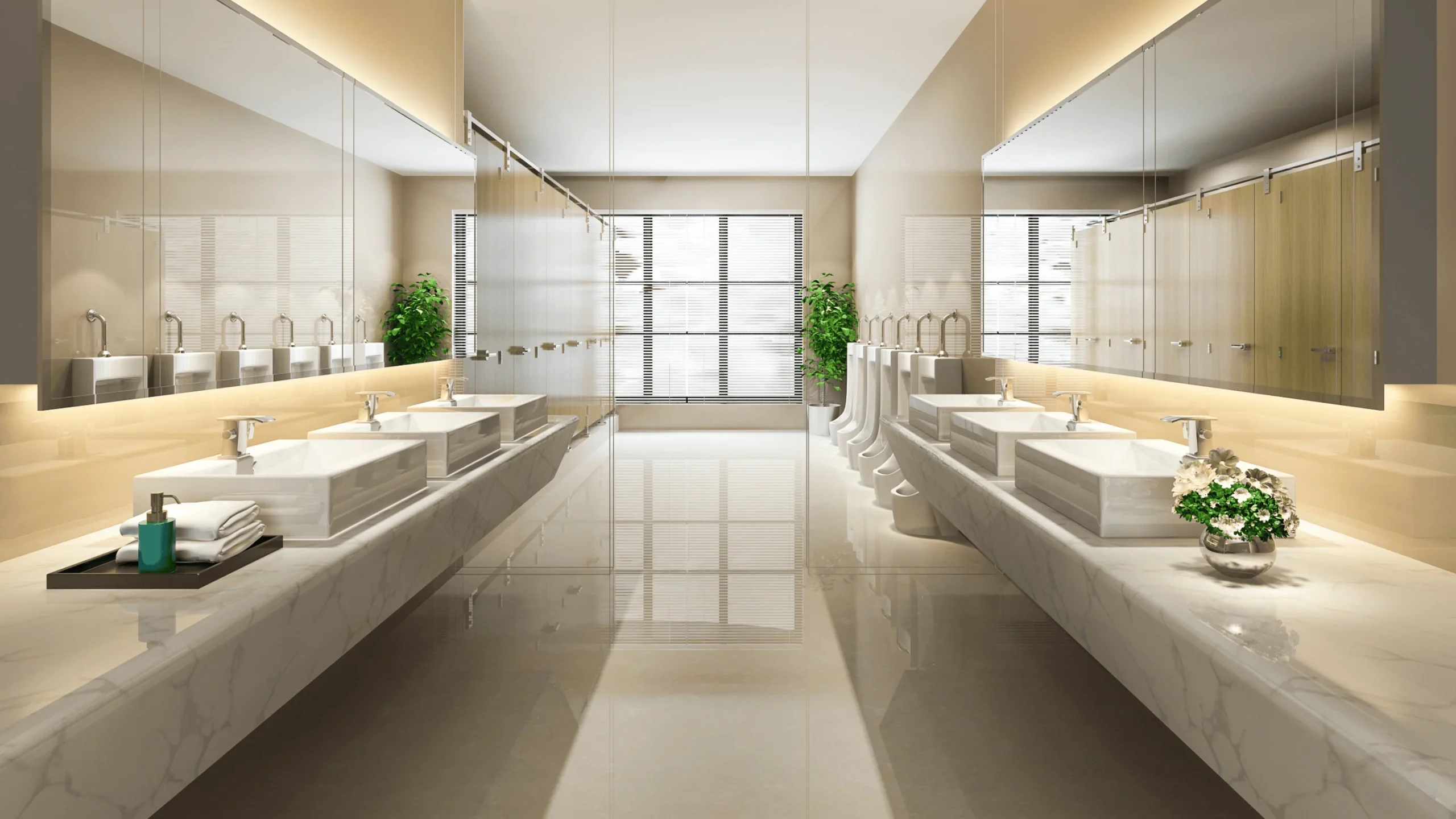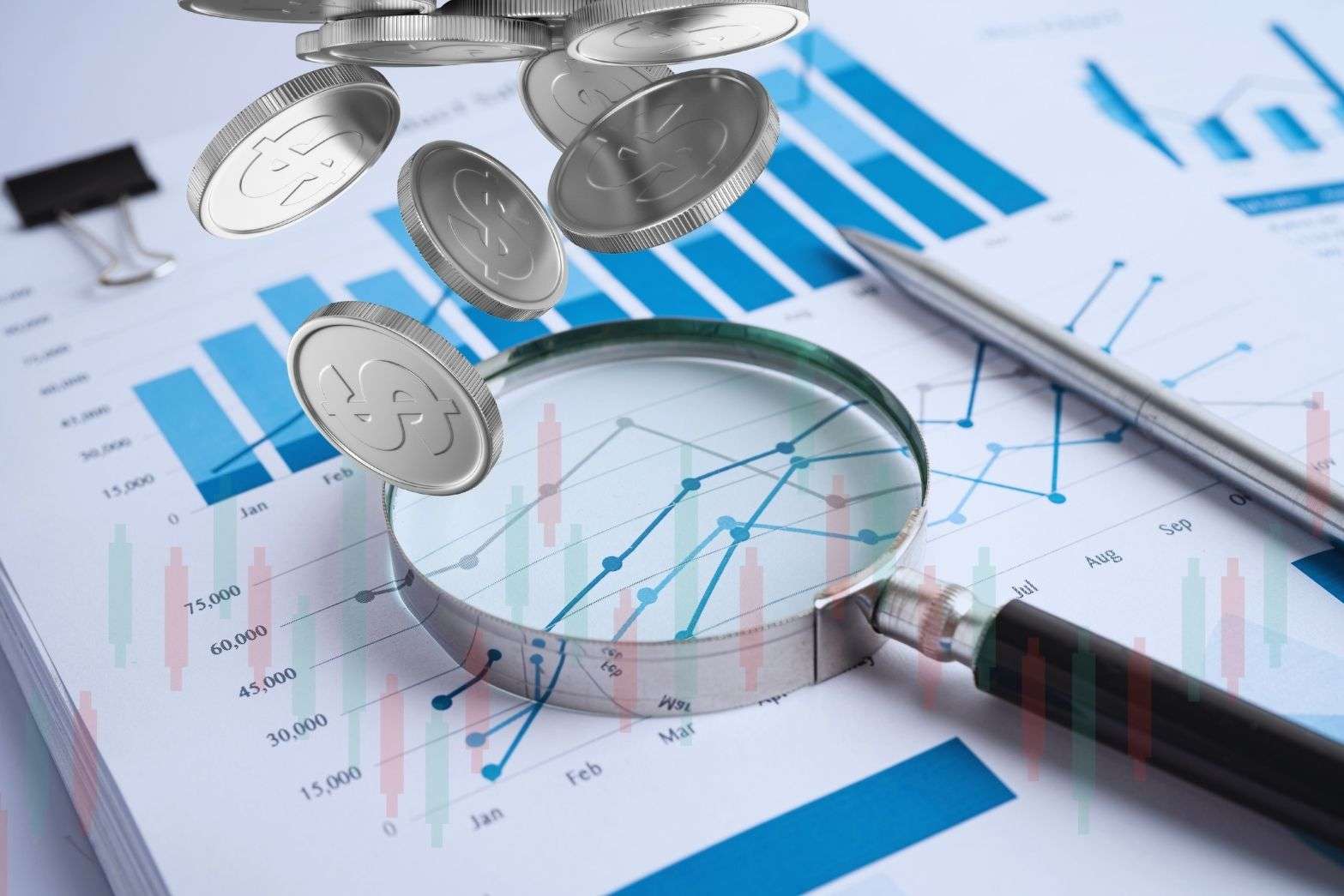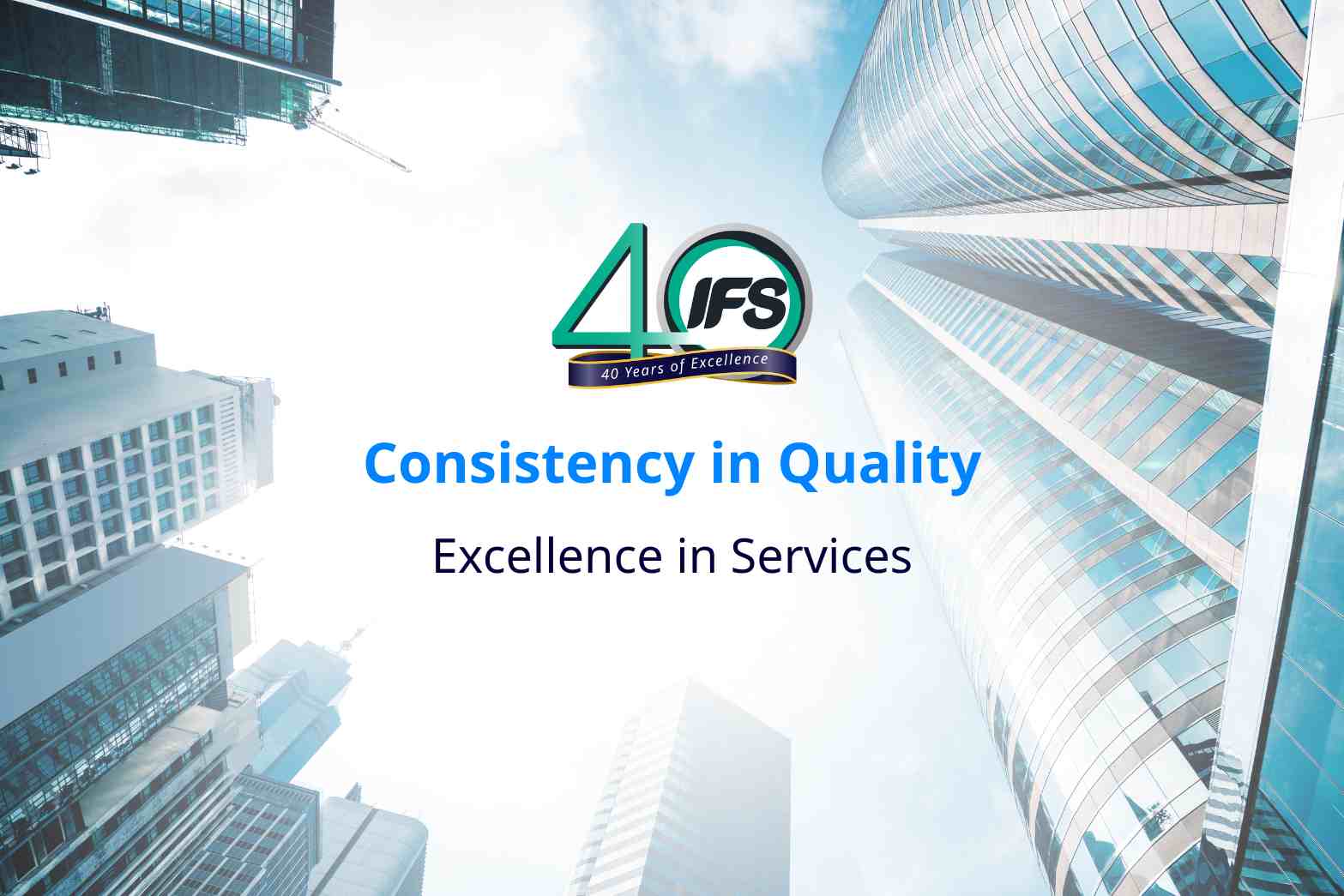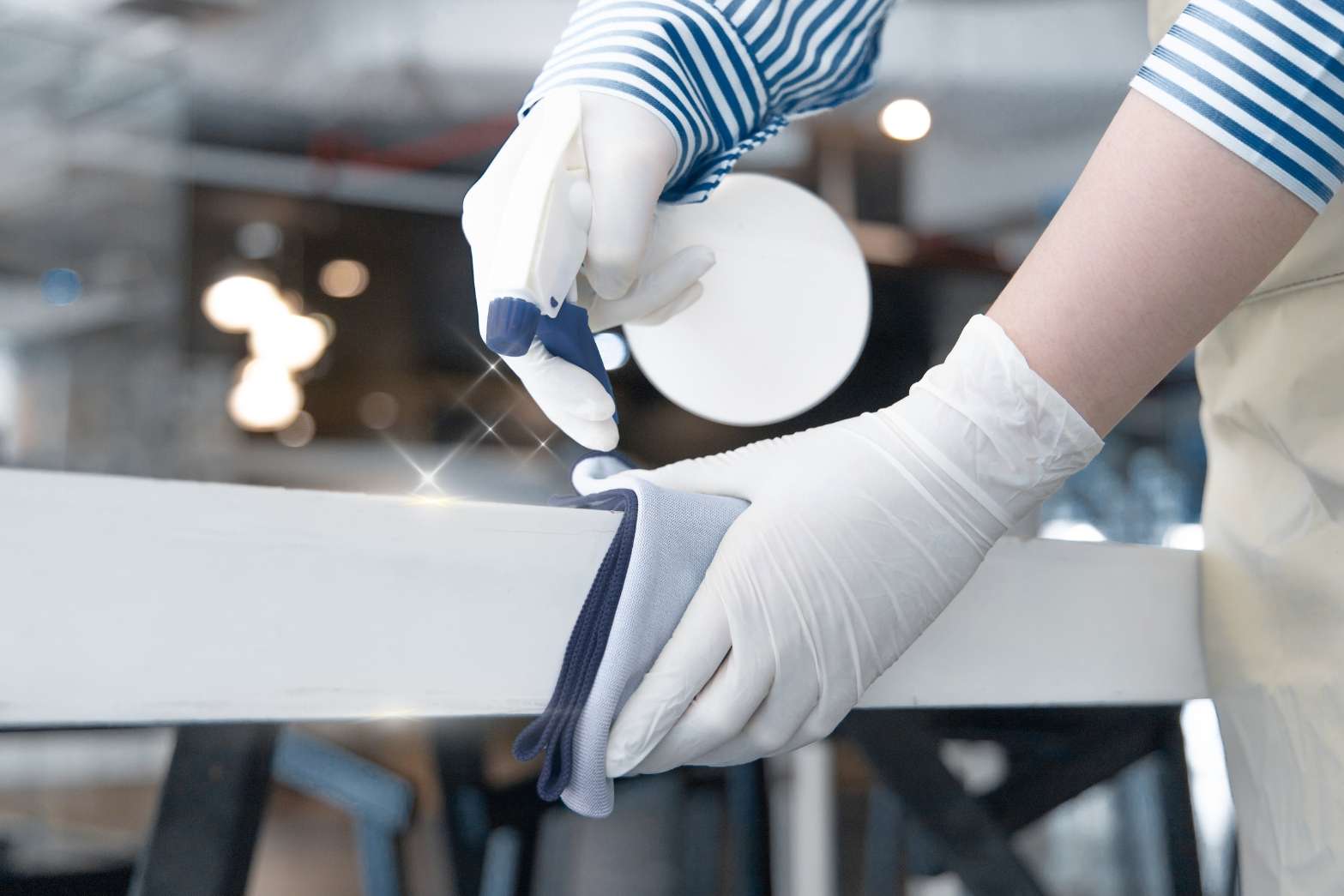Elevating corporate restroom hygiene isn’t just about looking clean today—it’s a system-wide quality program that is auditable, measurable, and continuously improved. Based on IFS Thailand’s real service experience under the concept “Restroom Hygiene as a Service,” this guide covers restroom sanitation standards, corporate hygiene guidelines, restroom hygiene policies, and quality criteria.
The framework rests on three pillars:
(1) Preventive Maintenance (PM)
(2) Service Level Agreements (SLAs) for maintenance
(3) service checklist reporting.
Restroom hygiene standards aligned to your site and real users
A restroom is a frontline touchpoint that reflects your organization’s image. People expect cleanliness, safety, a pleasant scent, and equipment that works every time. Good standards must match real on-site conditions and the right mix of equipment.
IFS Thailand provides end-to-end corporate restroom hygiene services to international standards—covering soap dispensers, air-fragrance systems, touchless sanitary bins, sanitizers, and tissue products—to deliver a clean, modern, and eco-friendly experience that strengthens the image of offices, factories, hotels, and hospitals.
How to select compliant hygiene equipment
- User safety: Minimize touch; use safe materials; protect against moisture; support hygienic waste handling.
- Durability & serviceability: Compatible with PM plans; low-level/battery alerts; clear spare-parts and warranty terms.
- Performance & value: Capacity and refill frequency; timer/continuous modes; total cost of ownership (TCO).
- Environmental impact & certifications: Recyclable materials; reduced energy/propellant use; relevant certifications.
- Fit for the space: Room size, traffic volume, peak periods, and easy-to-reach mounting positions.
For model specifications and technical details, see the IFS Thailand Integrated Restroom Hygiene Services page to set your standards and choose equipment suited to each building type and user volume.
Preventive Maintenance (PM) for Restrooms : Why Organizations Shouldn’t Overlook It
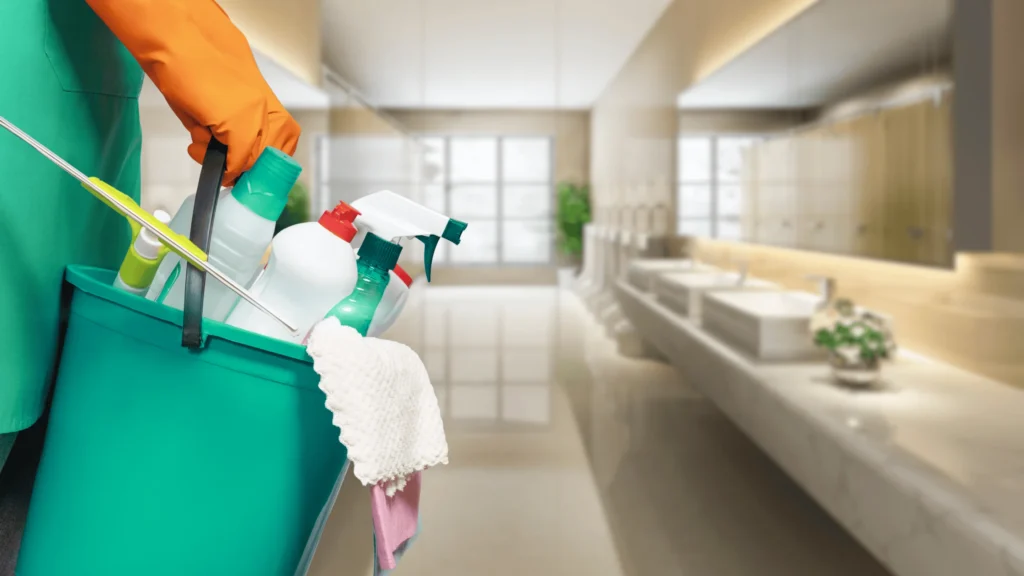
What PM Means and the goals for restrooms
Preventive Maintenance (PM) is the planned cycle of inspection, calibration, cleaning, testing, and servicing of hygiene equipment to prevent failures before they happen. The goals are to maximize uptime, reduce emergencies, control budget, and keep hygiene standards consistent across all locations.
Maintenance by hygiene equipment type
- Soap dispensers (automatic/manual): Test nozzles; check for leaks; verify soap/solution levels; adjust sensor or push mechanism; clean touchpoints; confirm mounting stability. (Service example: Eko Clean series)
- Odor control/air-fragrance devices: Check batteries; set timing/frequency; for non-battery types, check refills and airflow; splash reduction screens typically replaced about every 30 days. (e.g., Model 3100, Micro Airoma®, Fan Dispenser, V-SCREEN)
- Sanitizers & toilet seat wipes: Test pump; check chemical expiry; clean nozzle/seals; tighten fittings. (e.g., Automatic Toilet Sanitizer, Toilet Seat Sanitizer)
- Sanitary bins (touchless/foot-pedal): Check lid operation; odor seals; overall cleanliness; replace antimicrobial liners on schedule; record compliant waste disposal. (e.g., Femcare™ SIMPLE)
- Consumables: Toilet paper/paper towels, check levels and dispenser compatibility; plan refills to actual usage and peak periods.
Tip: If usage fluctuates, set cleaning and refill frequency to real traffic increase rounds at peak times and reduce during off-peak. Accuracy improves when you use people counters or an app to track usage and then adjust the schedule based on the data.
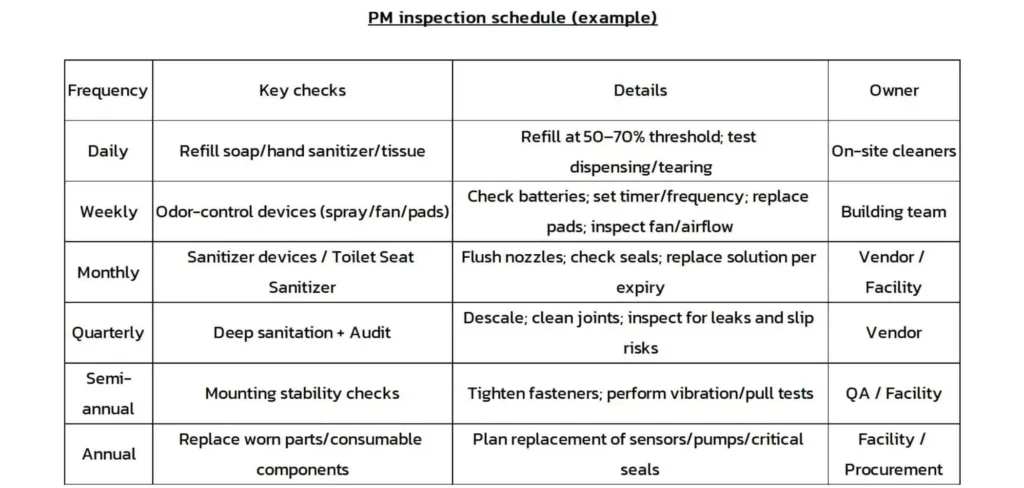
Seven steps to stand up a Preventive Maintenance (PM) program
- Map usage and peaks identify heavy- vs. light use areas and high-traffic time windows.
- Create an asset register model, serial number, and exact install location.
- Build daily/weekly/monthly checklists : Require before–after photos at key points.
- Publish a PM calendar : Clearly assign doers and reviewers for each cycle.
- Set proactive alerts : Solution levels, battery status, and refill/pad replacement cycles.
- Train the team on SOPs with device : Specific guides for the models actually in use.
- Digitize the records : Generate summaries and dashboards to track trends and ROI.
PM is a quality management system
PM is more than routine checks—it’s a quality system that reduces risk, controls cost, and improves user experience. Everyone knows what to do, when, by whom, and how results will be followed up. Emergencies decline and standards stay consistent across locations.
Why start now
- Fewer emergency failures of soap, fragrance, and sanitizer dispensers
- Less restroom downtime especially during peak hours
- Longer equipment life; fewer early part replacements
- Tighter control of consumables (soap, tissue, fragrance)
- Better cleanliness, scent, and readiness greater user confidence
What to expect in 6–12 months
- A clear drop in emergency repairs
- Reduced downtime and fewer complaints
- More predictable total cost for parts and labor
- Steadily improving user-satisfaction scores
- Reports that fine-tune service frequency with precision
Four warning signs it’s time to formalize restroom care
- Frequent complaints about odor or empty consumables
- Repeat failures in the same spots, or quick recurrence after repair
- Inconsistent SOPs across sites that hinder oversight
- No structured proof of service (before–after photos, timestamps, operator) for audits
PM frequently asked questions
1.Soap/tissue often runs out at certain times. How do we right-size?
Track refills for 1–2 weeks to see peaks, set a 50–70% refill threshold, use high-capacity dispensers in busy zones, and add backup points near entrances.
2.Short staffed how should we prioritize?
Prioritize fixtures/floors/refills first; defer cosmetic tasks; use alerting; review the schedule every two weeks.
3.No history how do we set PM cycles?
Collect usage data for 2–4 weeks, set initial cycles by peak patterns, pilot for one month, then adjust to the numbers.
4.Multiple sites how do we standardize?
Adopt a master checklist, train teams, run monthly random audits, and use a consolidated dashboard to compare performance.
Linking PM with the IFS Thailand offer: If you don’t yet have a system or provider, IFS Thailand can help from day one site survey, equipment recommendations, standard documentation, training, and ongoing follow-up tailored to each location. The Integrated Restroom Hygiene Services package is flexible: pick only what you need or run a short pilot before scaling.
SLAs for Restroom Hygiene Equipment—A Tool to Measure Service Quality
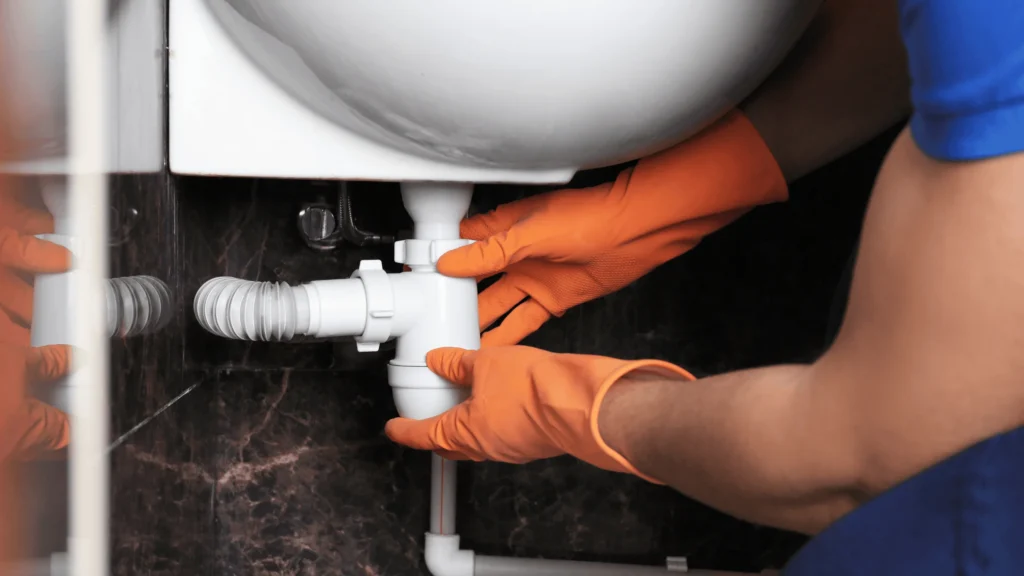
What an SLA is ? and why it matters ?
A Service Level Agreement (SLA) for restroom-hygiene maintenance sets measurable minimum service levels for example: response time, resolution time, first-time fix rate (FTFR), spares readiness, reporting standards, and credits/penalties when targets aren’t met. Clear SLAs make services transparent, comparable, and fair, especially when managing multiple vendors.
SLA components to define clearly
- Scope of equipment (dispensers, diffusers, sanitizers, sanitary bins, ventilation, etc.)
- Incident tiers (normal/urgent/critical) and the classification rules
- Target metrics: response, resolution, first-time fix
- Standards for spares, warranties, and temporary replacements
- Reporting cadence & format: per job + monthly + executive dashboard
- Credits/penalties for missed targets
Incident-to-resolution workflow
- A user scans a QR code or the building team opens a ticket.
- The system alerts the service team and starts the SLA timers.
- The technician confirms the appointment and estimates required spares by device model.
- On site: diagnose, repair/replace parts, and test operation.
- Log results with before–after photos and the closure timestamp.
- Produce a monthly summary: response time, resolution time, FTFR, repeat incidents, and user-satisfaction scores.
FAQs before contracting
1.What turnaround times should we set?
Typical starting points: P1 respond in 2–4 hours and make usable within 24 hours; P2 respond in 1 business day, fix within 48 hours; P3 respond in 2–3 business days, fix in 3–5 business days (adjust for building size and peak periods).
2.How do we define P1/P2/P3?
By impact on use, safety, and brand image: blockage/leak/severe odor = P1; some dispensers or diffusers down = P2; settings/appearance = P3.
3. Which channels and escalations should we specify?
List the channels people actually use (QR/phone/email/chat) and define clear escalation steps and timings for each priority.
How SLAs shape service quality and future costs
A comprehensive SLA makes restroom care reliable and predictable: shorter queues, clear repair timelines, planned budgets and spares, and fair comparisons when renewing vendors. At minimum, include scope, incident tiers and response/resolution targets, FTFR goal, spares policy, channels & escalation, reporting/dashboard, after-hours coverage, and credits/penalties.
Practical tip: Run a 30-day pilot to gather real data, tune priorities and timings for each building, then lock a corporate-wide SLA. Next, integrate it with the Integrated Restroom Hygiene Services program so maintenance, refills, and reporting/dashboards operate in sync.
Restroom Service Checklist Reports Transparent, Auditable, and Confidence-Building
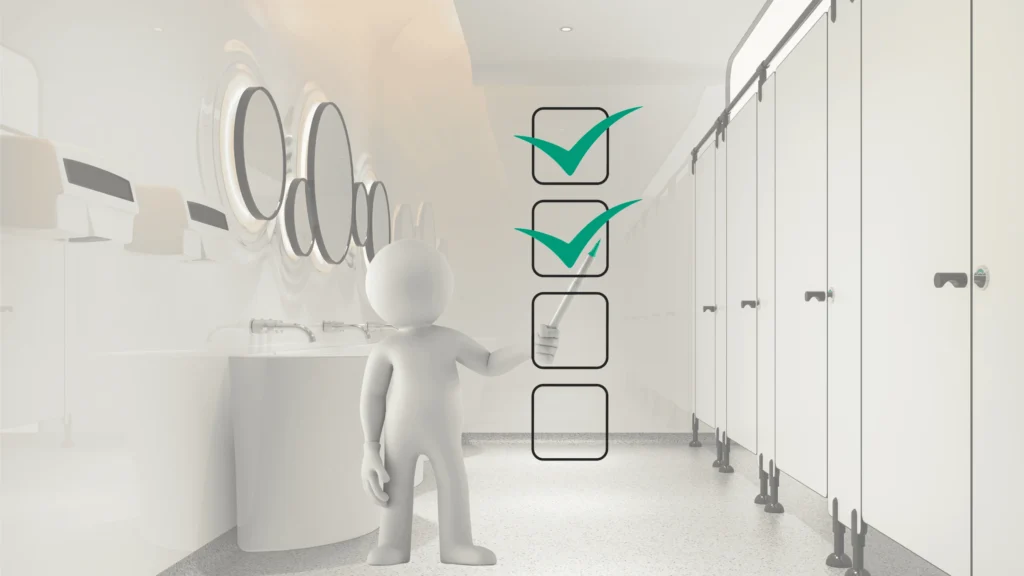
The role of checklist reports in a quality system
A service checklist report is both proof of service and a central quality database that links field execution to management. It enables full traceability date, time, operator, location, and photo evidence and near real-time tracking of progress. When well designed checklist reports help organizations:
รายงานที่ออกแบบอย่างเป็นระบบช่วยให้องค์กรสามารถ:
- Control standards: Confirm that critical items (cleanliness, scent, equipment readiness, consumables) are checked against defined criteria.
- Make data-driven decisions: Analyze trends and risks e.g., frequent top-ups, repeat equipment failures, low scent scores at certain times to target proactive actions.
- Connect PM and SLAs: Prove PM tasks were completed and measure SLA compliance (response times, closure times, repeat incidents) transparently.
- Plan budgets and resources: Forecast refills and spare parts; plan stock and staffing accurately to avoid shortages or overstock.
- Maintain compliance: Define data scope, storage method, and access rights aligned with privacy policies and applicable regulations.
The result is a transparent, auditable quality system that elevates the user experience while keeping costs under control, sustainably.
Must-have elements in a quality checklist report
- Date and time, operator, reviewer
- Work items performed (e.g., refill soap, replace fragrance pad, clean devices)
- Equipment status (normal/abnormal/repaired/pending)
- Before–after photos at all key points
- Consumables (added/remaining/forecast)
- Issues, root cause, and corrective/preventive actions (RCA/CAPA)
- Signatures of the responsible person and reviewer
- Link/QR to the maintenance ticket if an issue is found
How to link checklist reports with PM and SLAs
The checklist report serves as a centralized database that reflects the actual on-site conditions. It is used to adjust the preventive maintenance schedule to match usage levels and to fairly evaluate service level agreements (SLAs). In cases of recurring issues, corrective and preventive measures should be established, and follow-up actions must be taken until performance scores stabilize.
FAQ — checklist reporting
1.What should an office restroom checklist include?
Date/time; operator/reviewer; core checks (floors, walls, fixtures, high-touch points, consumables, scent/ventilation); equipment status; before–after photos; notes/issues; and a link to a repair ticket if needed.
2.How often should restrooms be checked?
Start with at least three rounds per day (morning, midday, evening), then adjust to real traffic/peak periods. High traffic zones may require hourly checks.
3.How do checklists reduce complaints?
They reveal problem times and repeat hotspots so you can adjust cleaning rounds, fragrance timing, trap-water checks, and exhaust fan tests.
A credible corporate restroom hygiene program is an auditable, measurable, and continuously improving quality system built on three pillars: Preventive Maintenance (PM), Service Level Agreements (SLAs), and digital checklist reporting. Start by collecting 2–4 weeks of usage data, set inspection rounds to real traffic, define incident levels with clear response/resolution targets, and record before–after evidence systematically. Done well, you’ll reduce emergencies and downtime, cut complaints, control budgets and inventory more precisely, and strengthen your reputation for cleanliness and safety.
IFS Thailand specializes in Washroom Hygiene Solutions ready to advise, design a fit for purpose approach for your facilities, and partner with you throughout implementation.
